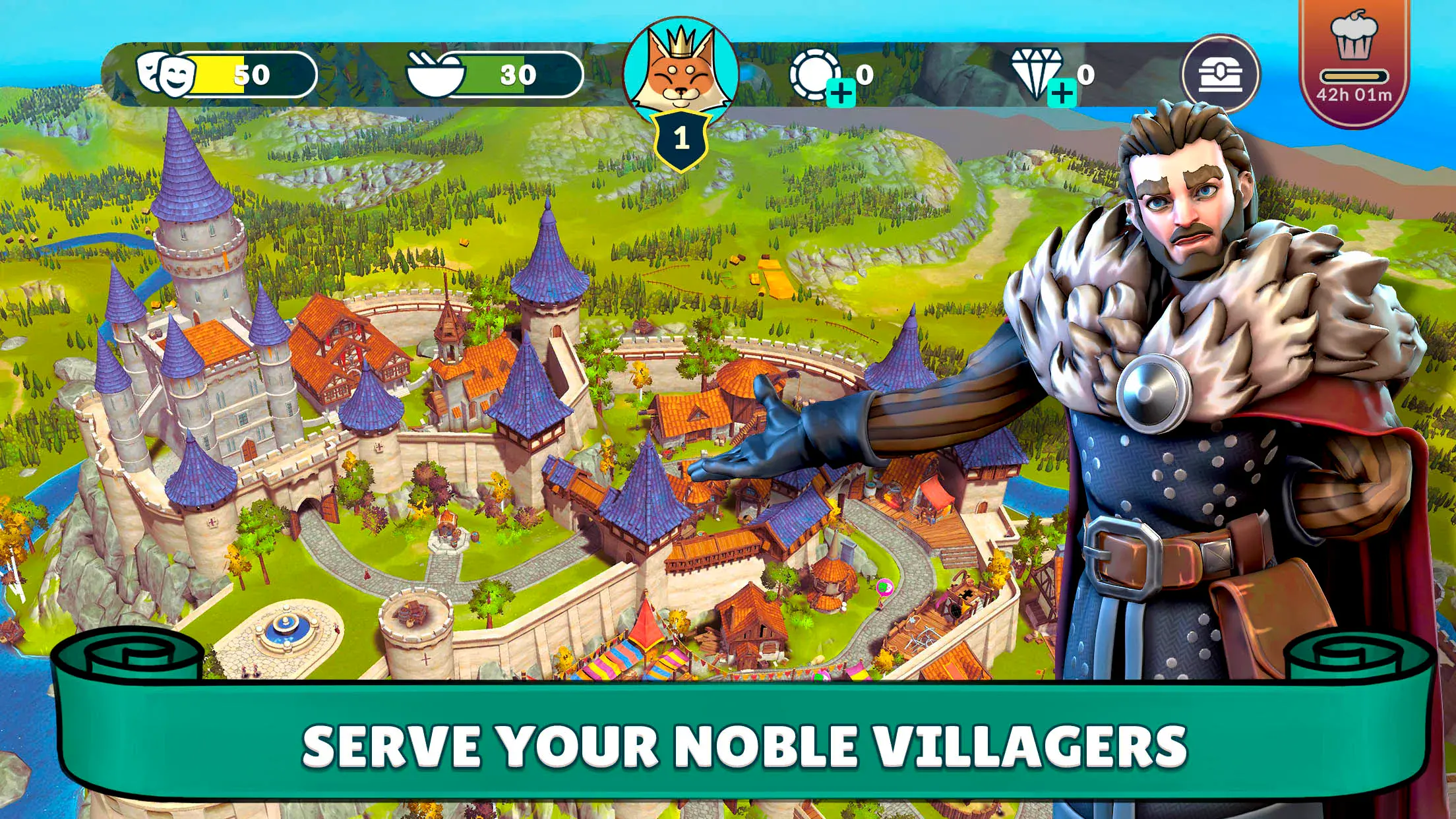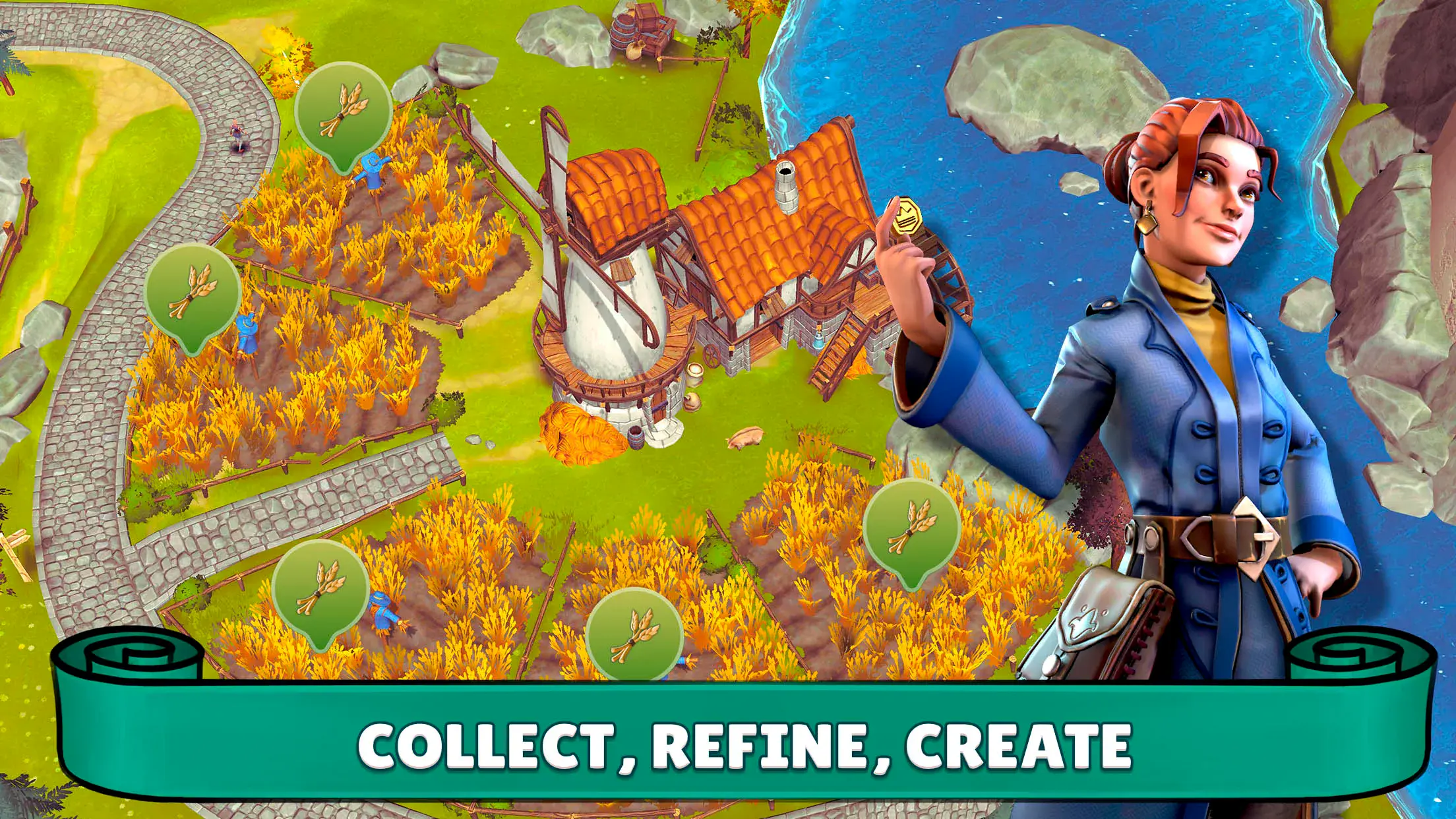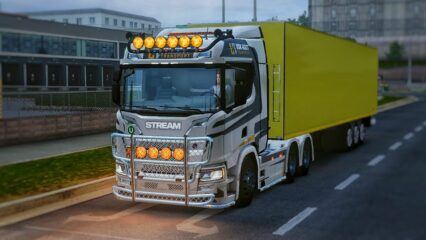The Kingdom: Medieval Tales Building Guide – Creating a Kingdom the Right Way

The Kingdom: Medieval Tales is a city-building game that creates an ecosystem within itself. This means that each building is used to produce something useful for another building (and your citizens). If you construct them in the right order and use them to support each other, you can grow your kingdom faster and more efficiently. Here, we’ll help you do this by listing the game’s basic buildings and explaining their functions.
General Information About the Construction System
The Kingdom: Medieval Tales uses similar mechanics to other city-building games, but each is designed with much more detail. However, the main building in the game is the Castle. To advance from one chapter to the next, you need to level up (upgrade) your Castle.

While this requires a significant number of resources, it’s essential for unlocking new building types. There are currently five chapters in the game, each containing the following structures:
| CHAPTER | UNLOCKED BUILDINGS |
| 1 | Storage, Farmhouse, Bakery, Market |
| 2 | Tavern, Smelter, Blacksmith, Toolwright, Barn, Mine |
| 3 | Florist, Carpenter |
| 4 | Research |
| 5 | Potion Brewer |
We can divide these buildings into two basic categories: “production” and “processing.” With this distinction in mind, let’s take a closer look.
Production Buildings
These produce basic materials that you will use to process or upgrade others. If you don’t have enough resources, you can’t do anything; these buildings essentially produce those resources. The most important ones are:
Forest Camp

This is the building you’ll use to produce wood, wicker, and leather. Click on it, select one of the available slots, and choose what to produce. You can produce a different material in each slot, but each will take a different amount of time to complete depending on its type and quantity. This can sometimes take as long as 15-16 hours. You can assign a total of four workers here, and you can produce almost anything that can’t be grown in fields. Wood is a crucial resource, especially in the early game, but the others quickly become important as well. Make this the first building you upgrade, as the higher its level, the more diverse the items you can produce.
Farmhouse

You can produce grain or fruit here. Grain is much more important in the early game, so we recommend focusing on it for a longer period of time. Once again, you can produce different items in different slots or use all slots to produce a single resource. You can also assign up to four workers here. There’s no need to rush into upgrading your farmhouse, as fruit won’t be essential for a long time.
Bakery

The Bakery is used primarily for food production. Unlike many other mobile RTS games, food is primarily used to generate happiness. So if you want your citizens to stay happy, you have to make sure it’s always running. There are many types of food that can be produced, and each costs different types/amounts of resources. Wheat, eggs, and water are basic crafting materials, and you’ll gather them from the Farmhouse and Barn. For water, you can use the Well in your city.
Living Quarters

Technically, this is still considered a production building, because the higher its level, the more villagers (and therefore workers) you’ll have. Always try to keep its level as high as possible, as you’ll be assigning at least one worker to almost every building, and it’s the only place that “produces” those workers.
Mines

As you might guess from the name, you use this building for mining. Iron and Copper are the basic materials you can mine, but as you level up, you can unlock new recipes. Mines will become essential starting in Chapter 2, so we recommend upgrading it as soon as possible.
Processing Buildings
These buildings create new items by processing the materials produced by others, and you can give them to your workers or citizens to make them more powerful and/or efficient. The most important buildings in this category are the Smelter, Blacksmith, and Toolwright.
Blacksmith & Smelter

These are interconnected buildings. The Smelter processes ore from the mines into bars. Blacksmith uses these to craft various equipment. The important thing to remember here is that this equipment is for military use, so you can give it to your soldiers/heroes. If you want to craft items for artisans and workers in production buildings, you should use the Toolwright.
Toolwright

The Toolwright also crafts items using materials from the mines, but as mentioned above, these are items you can give to your workers. These should always be prioritized over military equipment, as it’s more important to maintain production and efficiency. So, be sure to upgrade it before upgrading the Blacksmith.
There are other buildings in The Kingdom: Medieval Tales, but these are the most important, and as long as you understand how they work, you’ll have no trouble with the others. Finally, as always, we recommend playing The Kingdom: Medieval Tales on your PC using BlueStacks this will provide a much more enjoyable and seamless experience.















